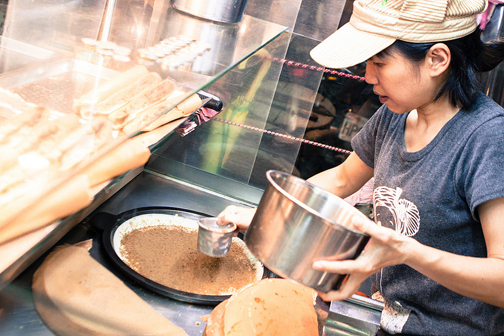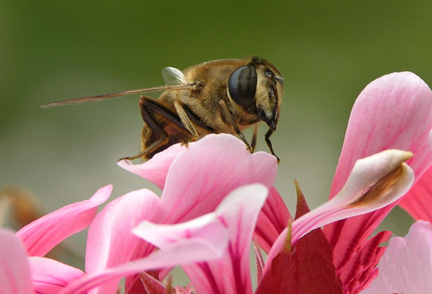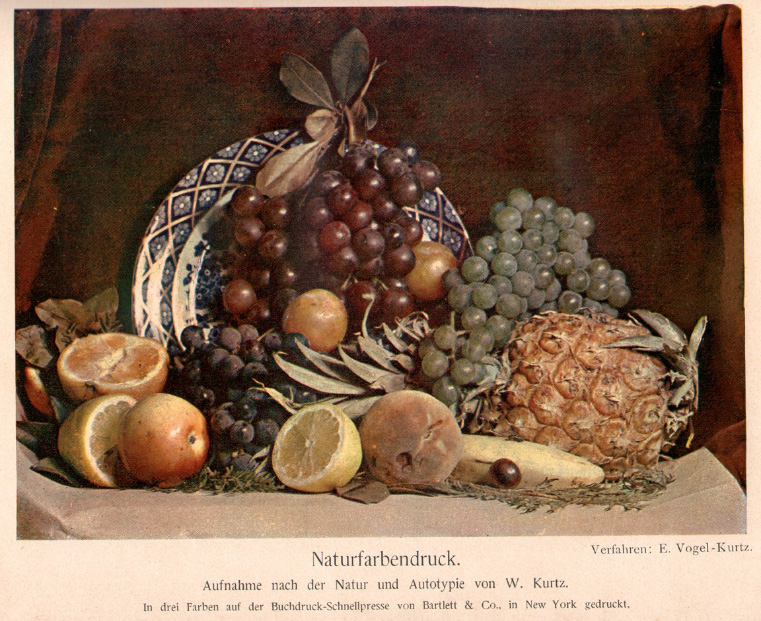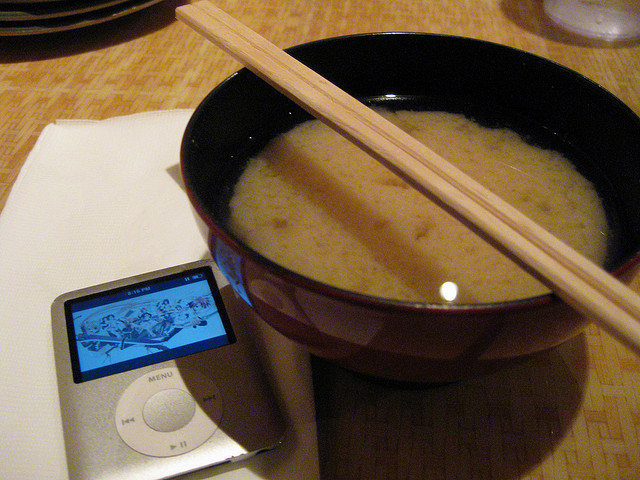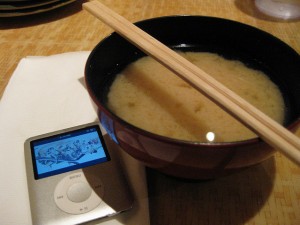Gaston belies his French name in preferring a tankard of beer over a glass of wine any day. In fact, he professes to finding few wines palatable—Most engender a twist of the mouth and a shudder to swallow.
We were out for dinner at les Remparts in Mirepoix one evening, and being basically ignorant of local wines, I asked the waiter to suggest something red that would go nicely with both of our meals. A half-bottle, as we had to drive afterwards.
Of course, she suggested the most expensive half-bottle on the list.
Gulp.
Well, I did ask her advice, so we ordered it.
Gaston did the pretentious bit, swirled the glass, stuck his nose deep inside, snorted…. All to delay the inevitable grimace and shudder.
A sip: And a wormhole opened onto a whole new dimension in the Gaston multiverse.
It was lovely. Smooth, rich, and multilayered. He marvelled, he swirled some more, he examined the long, luscious legs (or larmes, if you’re French), and sipped some more.
We took down the name of the vignéron, but couldn’t—of course—find it in any of the shops.
Several days on, en route from Carcassonne to Bézier, I took full advantage of my prerogative as navigator to direct Gaston off the main autoroute onto smaller byways. One of these—conveniently and with deliberate planning on my part—brought us to Pépieux, the address of the winemaker.
“Shall we go for a wine tasting at a cave?” I suggested to Gaston. Knowing that his best interests are best served by following all directions and suggestions put forward by the Navigator, he agreed.
“Great. We’re looking for a left turn onto such-and-such highway.”
“Yes, memsahib.”
We drove through town and came out the other side. No highway north. We turned around and tried it from the other direction. Nothing. Then back again. Still nada.
By this time, it was about 3:00 in the afternoon, we’d had a very busy morning and a lingering lunch out, it was hot in the car, and I was tired, hot, and getting fed up with being in the car.
“What do you want to do?”
“There’s a supermarket up ahead. It’s September, the foire des vin (wine festival), the wine we’re looking for is as local as you can get: maybe the supermarket carries it.”
So we stopped in, walked in, found the four long aisles of wine, and scanned each shelf, bottle by bottle. No luck.
“What do you want to do?”
“Well, we’re here. We’re not likely to ever be here again, so let’s drive through town once more and see.”
Fourth time lucky. Right where the main road was at its narrowest, one ordinary town street intersected with our path at a 90º angle, stone buildings perched right on the corners, leaving maybe a foot for curb and sidewalk. A small, hand-written cardboard sign, about seven feet up: Massamier la Mignarde, with an arrow.
The highway north was so narrow, we had to stop and backup on the main road in order to make the turn.
Once out of town, an official directional sign, courtesy of the highway department: Massamier la Mignarde, 400 m. We checked our odometer.
At 300 metres, there was a turn to a closed gate. At 500 metres, we arrived at the intersection with highway DX. At the corner, a gravel road led into a farmyard. Nothing at 400 metres. So we turned around and drove back and forth again, just to make sure we hadn’t missed anything, and to check to see if the gated driveway was more likely. We returned to the corner and peered into the farmyard. It was busy: trucks and small tractors were moving around.
“Let’s give it a try.”
We drove in, tentatively. We found a place out of the way to park. We got out of the car and looked around. A tiny, handwritten cardboard sign: Dégustations, with an arrow pointing around the corner (Tasting, with arrow).
We followed. Went down the slope and around the corner, and came to a deep, unlit archway connecting two buildings. On an even tinier handwritten sign next to a giant, iron-studded oak door: Dégustations: sonnez (Tastings: ring the bell). We pressed the buzzer and waited.
And waited.
Pressed again.
A few minutes later, an ancient bouvier came plodding around the corner and flopped down in the archway’s shade, panting.
Soon after, Madame arrived.
Bonjour, bonjour, “Vous voulez dégoûter?”
We came away from the cave with a box of six bottles of wine to enjoy over the next week and to take home with us.
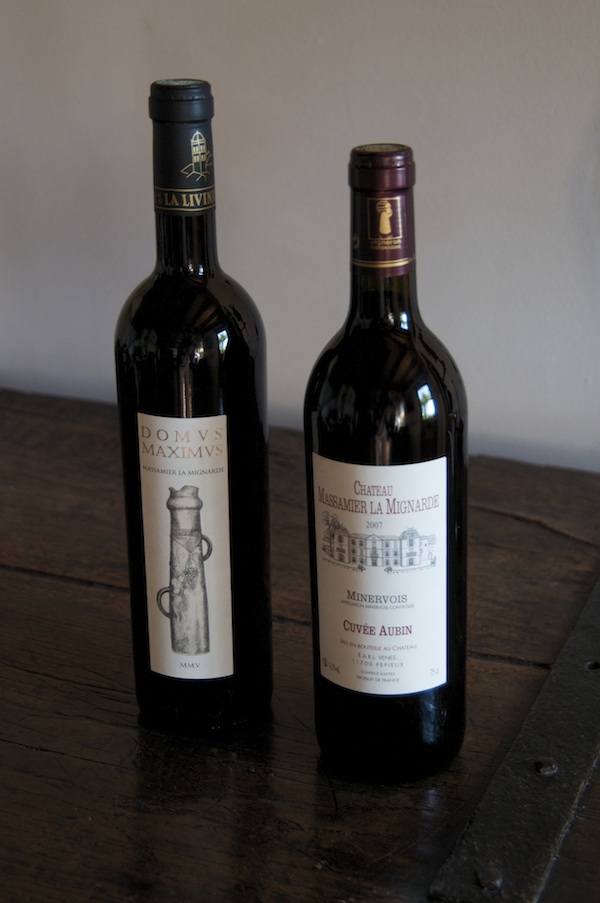
Cuvée Aubin and Domus Maximus. The Domus is named for the Massamier estate, originally settled by a Roman named Maximus. Hence, the estate is Massamier, and the wine is House of Maximus.
And we did indeed return. The next fall, we found the place easily, knowing the tricks. Also the signage in Pépieux had improved. The harvest was scheduled to begin the following Monday, the young woman attending the cellar told us. The dog came and said hello.
And this year, when we drove up, old hands at navigating there, a young woman from Korea greeted us, which permitted Gaston to practice his six words of Korean with her. She treated us to a full tasting of each of the kinds of wines offered by the cave (although not each of the vintages). Halfway through, Madame appeared and joined us, but the dog didn’t. We asked her about it: “Ah, c’est triste. Il a été écraser par un camion le décembre passé.” (He was hit by a truck last December.) She went on to tell us how this long-time four-legged companion had served as her doorbell for years, alerting her to visitors to the farm who wanted to taste the cave’s wine before they’d even had a chance to walk around to the cave’s entrance and ring the buzzer. Gaston shared some of his bouvier de Flandres experience. We commiserated.
Another party had joined the tasting, but were interested only in getting a mouthful of the 2005 Domus, the vineyard’s premium libation, voted as the best wine in the world by the vignérons of France. It wasn’t on offer, but the 2009 was. They left.
We bought some of our favourite, and a couple of bottles of the 2008 Domus (there is no way we could afford the 2005). Madame threw in a bottle of rosé.
We like to think she did that because we asked about her dog.

